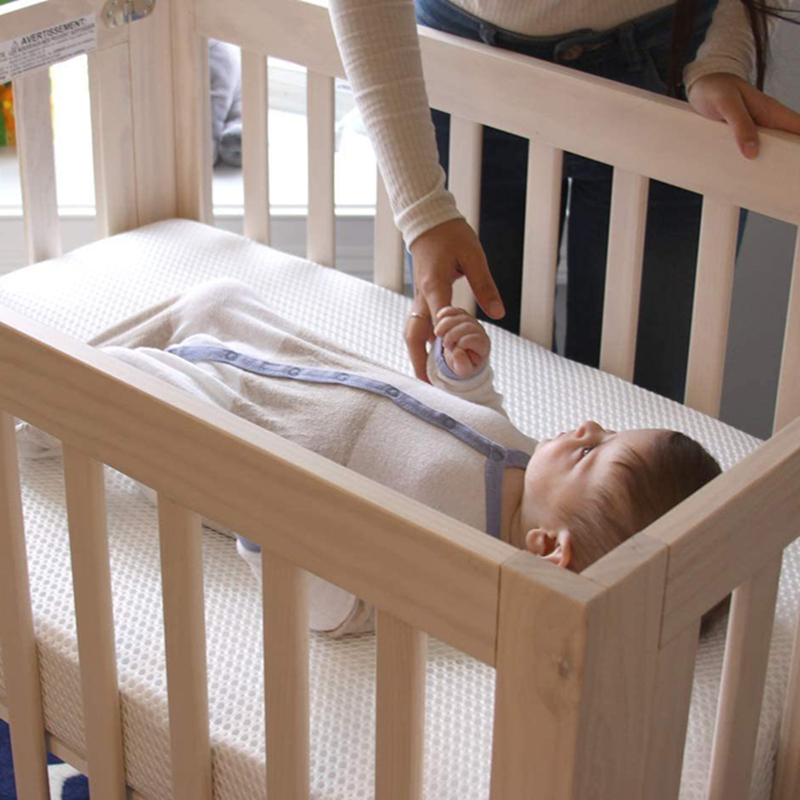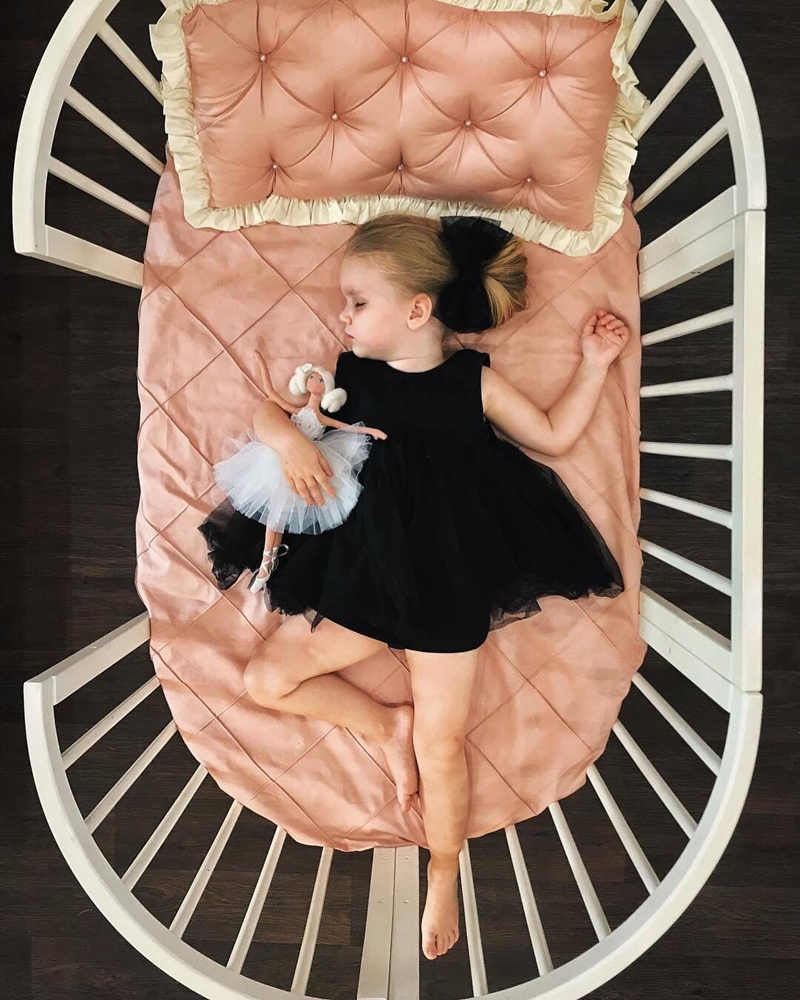When choosing a crib for your baby, be sure to keep safety in mind. Check that it is up-to-date with safety standards, for example. This is especially important when you are using previously owned pieces bought or passed on as gifts.
Antique cribs, for example, may look pretty, but the spacing between the slats rarely conforms to the current standard of 2 3/8 inches or less, which is intended to make it impossible for a baby's head to become caught. In addition, the finish may include old layers of lead based paint. You can trust new furniture if it bears the Juvenile Products Manufacturers Association safety certification seal.
The mattress should be very firm and should not sag under your baby's weight. It should fit snugly, with no space between the mattress and the crib walls. (Note: Your baby should never sleep on a water bed, sheepskin, pillow, sofa, armchair, or other soft surface.)

Raised crib sides should be at least 26 inches above the mattress support in its lowest position. Periodically lower the mattress as your child gets taller.
The headboards and footboards should be solid, with no decorative cutouts. Corner posts that could cause injury or snag clothing should be removed.
Do not use cribs with drop rails. These are not safe.
Also keep in mind that all fabrics your baby's room (for example, sleepwear, sheets, curtains) should be flame retardant.
Crib bumpers (or bumper pads) may seem as though they can help protect babies from drafts and bumps, but they should not be used in cribs. There is no evidence that bumper pads can prevent serious injuries, and they pose a risk of suffocation, strangulation, or entrapment. In addition, older babies can use them for climbing out of the crib.
Keep large toys and stuffed animals out of the crib, as your baby may use them to get a leg up and over the rail. Pillows, bulky comforters, and heavy blankets do not belong in a crib; a baby can easily smother under or pressed against them.

Babies do not need extra support, such as from rolled blankets or commercial devices, to keep them on their backs. Cumbersome materials like these clutter up the crib and may be hazardous for a baby.
Place the crib away from windows, where direct sunlight and drafts can make your baby uncomfortable. A crib can become uncomfortably hot if placed too near a radiator.
Make sure that there are no strings from blinds or curtains close by that can wrap around the baby's neck.
Also keep in mind that all fabrics your baby's room (sheets, sleepwear, and curtains, for example) should be flame retardant.
Once children are about 3 feet tall, they should start sleeping in a bed. If you are worried about your baby falling out of bed, you may want to start with the mattress on the floor.
Do you have any questions about choosing a crib? You can contact us or leave a message, we will have a dedicated business manager to answer your questions.
Tel:+86-18561845414
Mobile:+86-18561845414
Email: [email protected]